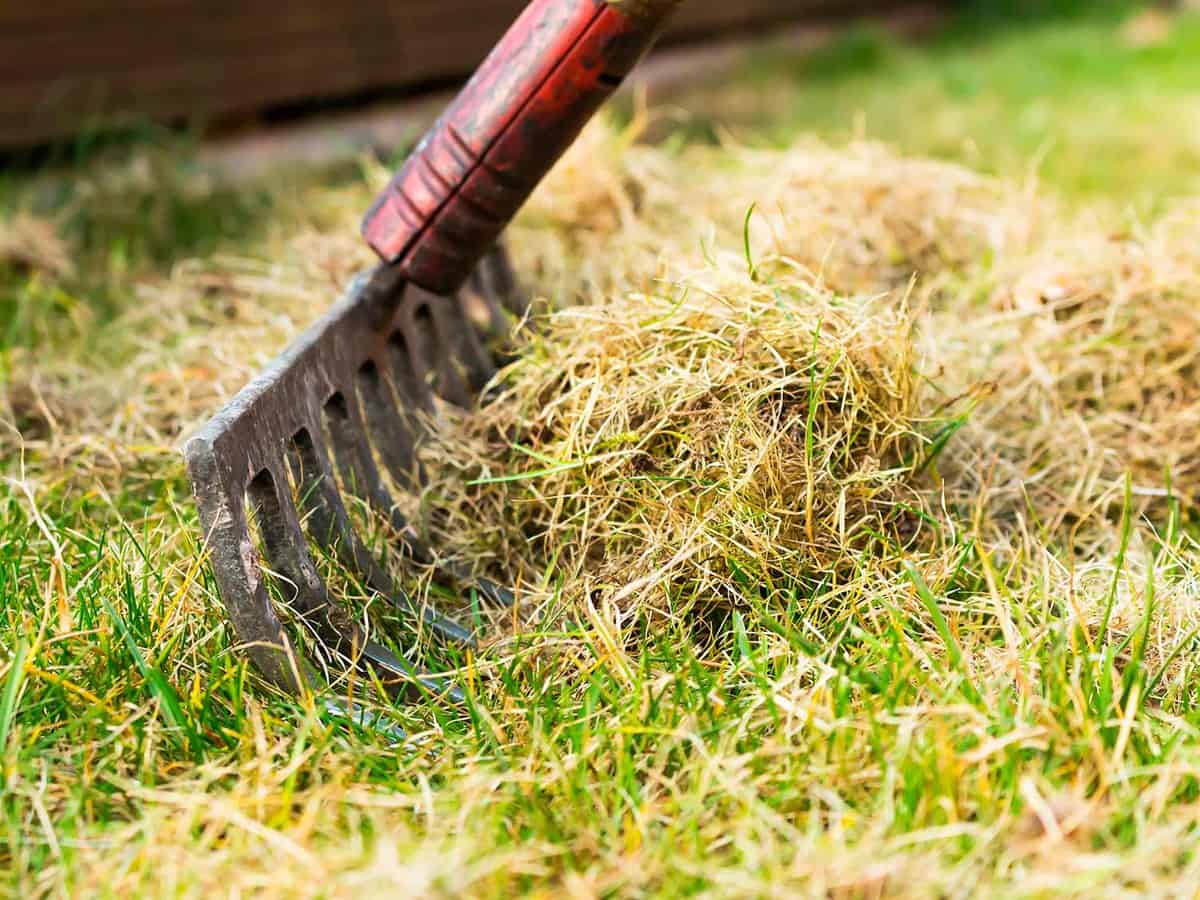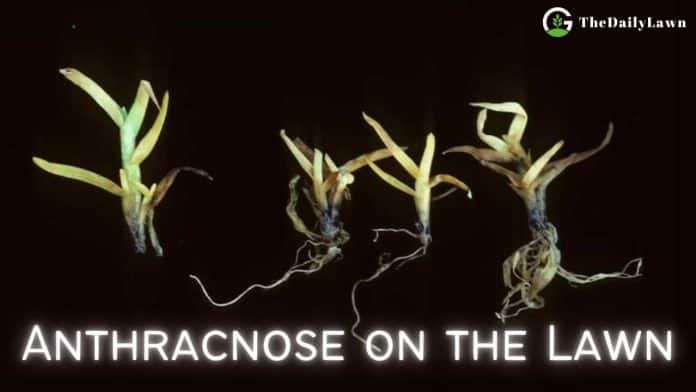Last time after we discussed the common turf disease, take all patches, we found a photo of a community member’s lawn. The lawn was affected by a disease that is more likely to be foliar bright, and the owner failed to Identify it. Well, one of our team members identified the disease: Anthracnose on the lawn.
To be true, Anthracnose is not as common as take-all patches, but when it appears on the lawn, it just covers up the entire place. First, the grass is affected, and then the roots just die. However, it is a deadly lawn disease, so we started researching it so that we can make you aware of it.
We talked to some lawn owners who had faced this disease on their lawns and asked some agriculturists for suggestions. After gathering all the information, we are here to introduce you to the disease anthracnose on the lawn.
What is Anthracnose?

The notable fact is, Anthracnose does not only propagate with the help of a single fungus, but many variants of fungi can cause this destruction to your lawn. Such as Kabatiella sp., Colletotrichum sp., and Apiognomonia sp.
The biggest targets of Anthracnose are creeping bentgrass and Annual bluegrass. However, there are some other vulnerable grasses too, including Centipedegrass, Tall fescue, Bermudagrass, Kentucky bluegrass, Fine-leaf Fescue, perennial ryegrass, and zoysia are commonly affected by this disease.
General Symptoms of Anthracnose

However, it would help if you learned to identify them. It is essential because the treatments for these two diseases are different. So, you must specify the disease before starting the treatment.
In the case of foliar blight, the turfgrass leaves are only infected, and it turns yellow to reddish-brown. However, in the case of Anthracnose, it is different. Both the crowns, leaf sheaths, and stolons get infected when the lawn is affected by Anthracnose. Here are some of the symptoms that will help you identify this disease.
- Crown tissue of the leaves will show up black and water-soaked. It won’t seem dry.
- You will see reddish-brown lesions along with yellow halos thriving on the grass.
- Black, Pad-like structures are named acervuli. It is recognized with its protruding black spines. A magnifying glass or small microscope can help you to trace it.
- The affected area will lose its greenish color, and you will identify the difference between the affected and unaffected areas.
- You will feel a powdery texture over the affected grass.
Before treating Anthracnose on the lawn, ensure the symptoms match the affected area. The wrong treatment can lead you to complete destruction. However, the next section will tell you about the common causes of Anthracnose.
Common Causes of Anthracnose on the Lawn

- This fungus generally propagates inside the plant tissue. Therefore, drought, warm temperature, and high humidity in summer is the most vital cause of this disease.
- Long times of leaf wetness will make the lawn too damp and increase the moisture. So, this will increase the chances of attacks by Anthracnose.
- Poor drainage and compact soil obstruct the water from getting out. The deposited water invites this disease to your lawn.
- The early spring chilly temperature promotes this disease’s development. This kind of environment is good for spreading fungi.
- Thatch buildup and low fertility also make your lawn more prone to Anthracnose. In thicker thatch, the fungi can easily make their suitable habitat.
- Excessive traffic and low mowing increase the stress factor on your lawn.
So, these are the main cause that can increase the risk of Anthracnose on your lawn. That’s why we suggest taking care of your lawn carefully, especially in the case of these factors.
How to Get Rid of Anthracnose from the Lawn?

However, when your lawn is affected by Anthracnose, it is clear that you are not properly taking care of your lawn. So, your first job should be making a lawn care schedule. And then, you can start treating the affected area. Here are some remedial steps that will help you get rid of Anthracnose.
Step 1: Stop Watering after 10 am for a few Weeks
If you tend to water your lawn in the evening, the moist soil will only invite this disease to take in. Therefore, watering the lawn, especially before 10 am, will nourish the grass and prevent additional moisture. And that is what you need to remove the fungus that causes Anthracnose.
Step 2: Cut the Grass of the Affected Area and Remove Grass Clippings
You have to cut the affected grasses by hand. Make sure not to use the mower as it can effectively spread the fungus over the lawn. However, you should remove the grass from the roots. While taking off the affected grass, make sure to wear protective gloves and musk.
Also, you should ensure that there are no grass clippings on the lawn, especially in the area where the grass is not affected. And you should remove those grass clippings quickly before the lawn gets higher risk of getting infected.
Step 3: Apply Fungicide to the Affected Area

Step 4: Removing Weeds from the Lawn
Lawn attacked by Anthracnose gets packed with weeds, and it swallows all the nutrients, moisture, space, and light. It raises the chance of spreading the disease very quickly. So, apply a post-emergent herbicide or hand-pull the existing weeds.
Step 5: Reseed the Vacant Area after a Few Weeks

Make sure that the vacant area is completely dry but not muddy. When it is the perfect time to sow seeds, you should start. However, no remedy is better than a proper lawn care routine to get rid of Anthracnose on the lawn. So, make a routine, and that must include watering in the morning.
How to Prevent Anthracnose on the Lawn
The initial step to prevent this disease is to get rid of the desired atmosphere for the growth of the fungus that causes Anthracnose. For that, you can follow some essential methods. You can prevent this disease by following the simple methods of prevention.
1. Test the Soil to Choose the Right Fertilizer

2. Maintain a Watering Schedule
Watering the lawn in sufficient amounts and daily promotes the root system’s healthy growth. But if you water for a very short time, the grasses will have a weak root system. In this case, you can make a sprinkler schedule. But make sure to test and identify the amount of water your lawn should get before you make the schedule.
3. Mowing the Lawn Timely
Mowing too low brings stress to your lawn, and the soil lesion encourages Anthracnose activity. Therefore, it is important to know that you should never cut more than one-third of the grass blade, or it will invite more diseases. Also, if the length of the grass is too low, the fungi can easily reach the roots. So, it is never suggested to mow too low.
4. Remove Extra Thatch

5. Aerate the Lawn After Your Lawn Is Fully Cured
Also, you should regularly aerate to keep it safe from Anthracnose. Remember that aerating the lawn while it is already affected by Anthracnose can lead you to face a more dangerous situation. Initially, the fungi can reach the deep in the soil if you aerate the lawn when it is already affected. So, make sure to aerate the lawn when it is fully cured.
6. Plant Disease-resistant Grass Seed
Choosing the right grass seed, considering the local climate conditions, nourishes the lawn. Some of the grass seed varieties are capable of resisting this disease. I have already told you the name of the grass types that are more prone to Anthracnose. So, try to avoid it while choosing the seeds.
Finally, you should make a proper lawn care routine. You must be aware that the main reason for Anthracnose is the incompetent lawn care routine. So, try to make a routine that contains proper fertilization, early watering schedule, timely mowing, aerating, etc.
FAQ
Q: What fungicide is commonly used to kill Anthracnose?
A: Different store-bought fungicides are used to cure Anthracnose. The protective fungicide is a mixture of Daconol, chlorothalonil, and copper sprays, including propiconazole and diammonium diacetate. Furthermore, you will find systemic fungicide thiophanate methyl, which is also very effective.
Q: How long does Anthracnose stay in lawn soil?
A: If you don’t take the necessary steps to cure Anthracnose, it can stay for a couple of years. Cool and damp weather is primarily responsible for the development of this disease. However, without proper maintenance of the lawn, this disease nestles into the soil for up to three years.
Q: Does Neem oil work against Anthracnose?
A: Neem oil is a 70 percent workable fungicide to prevent Anthracnose. However, if your lawn soil is attacked with any other fungal disease such as powdery mildew, tip blight, leaf spot, or downy mildew, neem oil works there effectively too.
Q: Which one is more effective, neem oil or chemical fungicide?
A: Undoubtedly, neem oil is more effective in treating and preventing any fungus disease, including Anthracnose. You can use this for multiple purposes, and treating other diseases from fungi is easy too.
Q: Is Anthracnose harmful to humans?
A: No, Anthracnose is not harmful to humans. It does not attack humans only if they have allergic issues. Still, it is always suggested to wear gloves and other protection wears to treat grass with Anthracnose.
Bottom Line
For your lawn, Anthracnose is a deadly disease. It can spread so quickly and can easily kill your lawn. So, it would be best if you never waited for Anthracnose on the lawn so that you can treat it. Indeed, you should take the necessary steps to prevent Anthracnose on the lawn.
Once again, I would suggest you make a proper lawn care routine. Try to water it early in the morning and aerate it timely. Don’t mow the grass too low and use appropriate fertilizer as well. Not just Anthracnose; you can be able to prevent many other lawn diseases.
Now, let us know if you even face this disease on your lawn. If yes, let us know how you managed to get rid of it. However, you can share this content with your familiar person, who is also tense because of the same lawn disease. Many thanks for considering my request.
